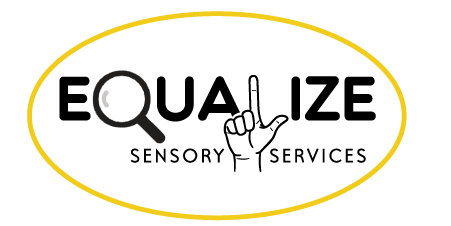Improving Classroom Acoustics
by Jillian Morency, Teacher of the Deaf, Equalize Sensory Services
As teachers of students with hearing loss, it is important to be aware that cochlear implants and hearing aids are not a magical solution for our kiddos. While they may provide the child with the ability to detect sounds at various frequencies, they do not provide the student with the same listening comprehension, vocabulary and background knowledge as a child with typical hearing. Add to this the hustle and bustle of the average classroom and our children with hearing loss miss even more information and incidental learning opportunities.
While we are not always able to change everything about the listening environment, there are some simple and inexpensive tweaks that we can make to reduce background noise and distractions for all of our students.
- Keep the classroom well-lit to allow access to the speaker’s facial expressions and mouth for speech-reading.
- Gain the students’ attention before speaking.
- Keep the doors and windows closed during instruction.
- Designate a specific time for students to sharpen pencils before or after direct instruction.
- Place tennis balls or thick felt-wraps around the feet of each chair to reduce the screech when children are pushing chairs in and out.
- Use the FM/ALD device and making sure that it is within 6 inches from the speaker’s mouth and free from any necklaces, lanyards, nametags, keys that may rub against it and cause static/crackling sounds.
- Reduce echo/reverberation by hanging up cork boards, posters and/or tapestries on the bare walls.
- Encourage students to pass the mic during sharing times or presentations.
- Use visual aids whenever possible and/or providing “fill in the blank” notes and outlines to encourage active listening during lectures.
- If you still have questions or concerns regarding how well a student can listen and comprehend material presented in the classroom, you can always contact Equalize Sensory Services and request a Functional Listening Evaluation from a Teacher of the Deaf and Hard of Hearing. This will provide you with student-specific strengths and weaknesses and the Teacher of the Deaf will be able to provide specialized feedback regarding the unique acoustics of YOUR specific classroom and suggestions on how to optimize the listening environment for the individual needs of your students.
Have other ideas for improving classroom acoustics? We’d love to hear from you! Send an email to kim@equalizeservices.com.

